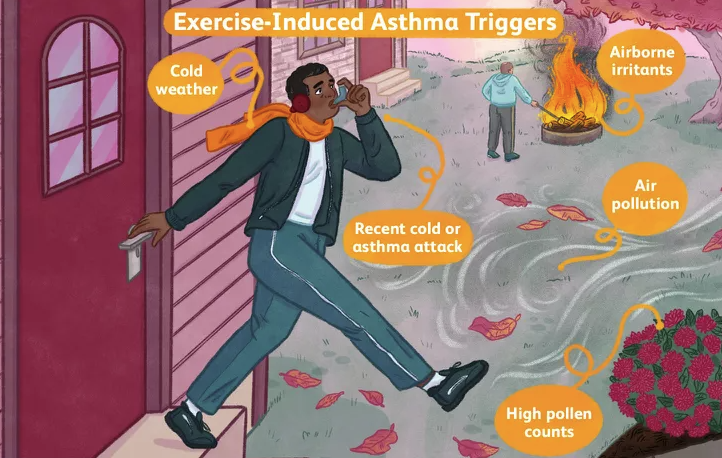Exercise-Induced Asthma
Breathing is the backbone of exercise. Athletes are told from day one of training to control their breathing to better their performance, build endurance, and improve their technique; however, many athletes will find themselves pushing their bodies to the limit thus leading to damage. Exercise-induced asthma, or exercise-induced bronchoconstriction, is common in both asthma patients and high-level athletes, but understanding its complexities, requires a deeper dive.
Causes:
The direct cause of EIB has been linked to a few different factors, but the main one is cold/dry air intake when exercising. When inhaled, the temperature of the air causes inflammation and dehydration within the patient's airway. This leads to constriction and reduces the airflow to the patient’s lungs.
Other potential factors include:
Pollution within air
Pollen
Chlorine or other irritants in the air
Previous asthma attacks
Symptoms:
Many of the symptoms of EIB are similar to regular asthma due to the strong correlation between the two.
Common symptoms include:
Wheezing or shortness of breath
Fatigue
Chest tightness or pain
The timeline for EIB is based on the time that an athlete exercises. During the initial few minutes of the workout, the symptoms will begin to take effect; after about 10 to 15 minutes, the symptoms will reach the height of their potency and then fade an hour after the exercise concludes. Some patients have reported “late-stage” symptoms which can take up to 24 hours to resolve.
Treatments:
Exercise-induced asthma is highly treatable and preventable. The main treatment is similar to that of regular asthma; most doctors prescribe an inhaler that is to be used 15-20 minutes before exercise. The medication within the inhaler (either short-acting beta antagonists or ipratropium) relaxes the muscles in the throat which helps prevent the constriction that causes the lack of airflow.
A long-term treatment is also common to help alleviate asthma symptoms or underlying health issues, but it varies from patient to patient. Inhaled corticosteroids, combination inhalers, and leukotriene modifiers are all common medications that are taken/used daily.
Sources:
Asthma and Allergy Foundation of America. (2022, June). Exercise. Asthma & Allergy Foundation of America. https://aafa.org/asthma/asthma-triggers-causes/exercise-induced-asthma/
Exercise-induced asthma - Diagnosis and treatment - Mayo Clinic. (2018). Mayoclinic.org. https://www.mayoclinic.org/diseases-conditions/exercise-induced-asthma/diagnosis-treatment/drc-20372306

